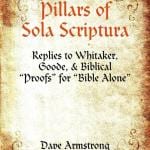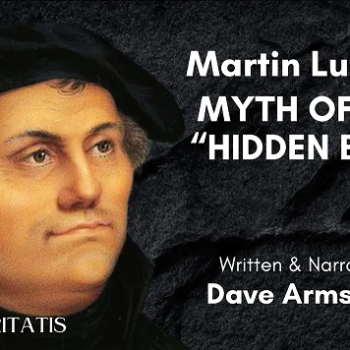Archaeological, Prophetic, and Manuscript Evidences

The Bible has been abused, criticized and scorned more than any other book in history. Many attack it in order to undermine and destroy the basis of Christianity, the perpetuation of which is so annoying to them. The notion of an ancient collection at writings concerning God and morality exercising influence over “enlightened” 21st century man is absolutely repugnant to many people today, especially intellectuals.
Very well then; emotionalism aside, let’s examine some of the reasons why intelligent, educated persons continue to accept the Bible on its own terms today. Is there a rational, logical basis for such a belief? The answer is most assuredly and unashamedly, yes, and there exists very strong indications that the Bible is nothing less than the Word of God.
Once the many evidences are examined, the skeptical view of Scripture: that it is mythological, filled with contradictions, inaccuracies, and unacceptable, “primitive” ideas, that God had no hand in it, etc., are left devoid of any foundation. Arguably, there are a few contradictions and “problem passages” to be found, but these are very minor and insubstantial next to the overwhelming indications of divine authorship, and can be largely (if not totally) attributed to early copying errors.
Before continuing, I wish to appeal to intellectual fairness and open-mindedness. If what I present is truly reasonable proof, it is hoped that the reader would accept it as any other evidence. Many reject such arguments because of the moral implications inherent in the acceptance of the Bible. This moral element puts the discussion on different ground, which is why people tend to be either vehemently for or against the Bible.
The claim to divine inspiration pervades the Bible throughout. This, of course, does not prove anything in and of itself but it is a logical starting-point for our analysis. 2 Timothy 3:16 says: “All scripture is God-breathed.” 2 Peter 1:20-21: “For no prophecy recorded in scripture was ever thought up by the prophet himself. It vas the Holy Spirit within these godly men who gave them true messages from God.” Jesus states in Matthew 5:18: “As long as heaven and earth last, the least point or the smallest detail of the Law will not be done away with.” Isaiah: 40:8 declares: “The Word of our God endures forever.” There are many other such statements. At least 3800 times in the Old Testament, “The Lord says” or a similar expression occurs.
Clearly, then, the Bible presents itself as God’s Word, or Revelation, given to us for our benefit. Jesus quoted from many Old Testament books as if they were completely authoritative, including Genesis. He said in John 10:35 that “Scripture cannot be untrue”, and appealed to fulfilled prophecy repeatedly to substantiate His claims to deity. Now, obviously if one believes that Jesus was God, then one must agree with His view of the Bible. But this is a relatively weak argument for the skeptic.
The total unity and internal consistency of the teachings of the Bible is a strong argument for an ultimate divine authorship, when it is considered that over forty people wrote the Bible over a period of about 1500 years. They were from different cultures and eras, spoke different languages and had widely divergent personalities, backgrounds, occupations, and writing styles.
This argument may appear simplistic but if one asked forty people of similar characteristics to write a one-page essay on a simple subject, I submit that the result would be a chaotic mishmash. One must then explain how the Bible can be so consistent. The more one reads the Bible, the more evident this is.
Someone might sincerely ask, “But how can we know that the Bible hasn’t been distorted or changed in all those centuries?” This legitimate concern can be shown to be groundless. In quality, age, and quantity of manuscripts, the Bible far exceeds all other ancient writings and even many of comparatively recent origin, such as Shakespeare. Sir Frederic G. Kenyon, who was the director of the British Museum and perhaps the foremost authority on manuscripts in his day, said this about the Bible:
The last foundation for any doubt that the scriptures have come down to us substantially as they were written has now been removed. The authenticity of the books of the New Testament may be regarded as finally established. (The Bible and Archaeology, New York: Harper and Row, 1940, 288)
No fundamental doctrine of the Christian faith rests on a disputed reading. It cannot be too strongly asserted that in substance the text of the Bible is certain; especially this is the case with the New Testament. Scholars are satisfied that they possess substantially the true text of the principal Greek and Roman writers whose works have come down to us, yet our knowledge of their writings depends on a mere handful of manuscripts, whereas those of the New Testament are counted by the thousands. (Our Bible and the Ancient Manuscripts, New York: Harper Bros., 1941, 23)
To illustrate, let’s compare the manuscript evidence:
Author Date Written Earliest copy Number of Copies
Caesar 100-44 B.C. 900 A.D. 10
Tacitus (Annals) 100 A.D. 1100 A.D. 20
Pliny the Younger
(History) 61-113 A.D. 850 A.D. 7
Suetonius
(Life of Caesar) 75-160 A.D. 950 A.D. 8
Thucydides
(History) 460-400 B.C. 900 A.D. 8
Aristotle 384-322 B.C. 1100 A.D 49 of any one
Homer (Iliad) 900 B.C. 400 B.C. 643
(next highest manuscript total)
New Testament 40-100 A.D. 125 A.D. over 24,000
The discovery or the Dead Sea Scrolls in 1947 greatly solidified the certainty or our present Old Testament text. For example, a complete scroll of Isaiah was found and dated at 125 B.C. The previous oldest extant manuscript was from 916 A.D. In comparing the two it was found that they were word-for-word identical in more than 95% of the text. The variations consisted chiefly of slips of the pen and different spellings. The Hebrews meticulously copied their sacred writings with great care, believing that God would punish them if they changed the writings in the least. The ancient Hebrews had scribes whose sole occupation was to check and recheck the Holy Scriptures for accuracy.
Now let’s consider the findings of historical research and archaeology — fields of study which overwhelmingly support the Bible. Concerning the “Table of Nations” in Genesis 10, William F. Albright, the great biblical archaeologist states:
It stands absolutely alone in ancient literature without a remote parallel even among the Greeks and remains an astonishingly accurate document. It shows such remarkably ‘modern’ understanding of the ethnic and linguistic situation in the modern world, in spite of all its complexity, that scholars never fail to be impressed with the author’s knowledge of the subject. (Recent Discoveries in Bible Lands, New York: Funk & Wagnalls, 1955, 70 ff.)
Sir William Ramsay, regarded as one of the greatest archaeologists who ever lived, used to be a skeptic of the Bible until he studied Luke’s writings (Luke and Acts). He was forced to revise his views. What did he conclude after thirty years of study?:
Luke is an historian of the first rank; not merely are his statements of fact trustworthy, but this author should be placed along with the very greatest of historians. (The Bearing of Recent Discovery on the Trustworthiness of the New Testament, Grand Rapids, Michigan: Baker Book House, 1953, 222)
Countless instances of Bible accuracy could be cited. Many modern philologists attest to the likelihood of a common origin of all languages (Tower of Babel story, Genesis 11). The excavations at Jericho amazingly supported the biblical account. The walls fell outward, an exceedingly rare occurrence.
But even these startling results of research, which may point to, but don’t prove divine authorship, are nothing compared to the extraordinary confirmation of fulfilled prophecy. It has been proven again and again that the Bible accurately foretold future events hundreds, and sometimes thousands at years before they took place, often in fairly minute detail. One might logically
conclude that only a Being Who somehow knew the future could have done such a thing. No human has ever remotely approached the marvelous predictive record at the biblical prophets. Astrology is an utter farce in comparison.
One of the most incredible predictions was of the destruction and subsequent history of Babylon. They were written by Isaiah (8th cent. B.C.) and Jeremiah (626-586 B.C.) and are recorded in Isaiah 13:19-22 and 14:23, and in Jeremiah 51:26,43. Babylon was probably the greatest city in the world at its height: the 7th and 6th centuries B.C. It was 196 square miles in area, with walls that were 311 feet high and 87 feet wide, with 100 solid brass gates and 250 watchtowers, which were 400 feet high. Some of the details mentioned in the prophecies were that wild animals would live there, the stones would not be removed, and that swamps would cover the site.
All of this happened, of course. The fulfillment began in 539 B.C. when the Persians, under Cyrus, conquered Babylon without a fight by diverting the Euphrates river, which ran through the city, and marching under the walls during an annual feast. It rapidly decayed after that and no one ever lived there again.
Hundreds of fulfillments equally notable have taken pace. One need only read the Bible and then compare it to subsequent history. The dating of the prophecies before the events is beyond all dispute, even by the latest, most liberal calculations. Some other prophecies concern Tyre (an especially noteworthy one — Ezekiel 26:3-21), Samaria (Hosea 13:16 and Micah 1:6), Petra and Edom (Isaiah 34:6-15, Jeremiah 49:17-18, Ezekiel 25:13-14 and 35:5-7), Nineveh (Nahum 1:8-10 2:6, 3:10, 13, 19), Chorazin, Bethsaida, and Capernaum (Matthew 11:20-24).
And then there are the scores of prophecies which were fulfilled in the life of Jesus, many of which He could not possibly have faked. The apostles, in the New Testament, often appeal to messianic promises and fulfilled prophecies as evidence of the Messiahship and Divinity of Jesus Christ (e.g., Mt 2:4-6, Rom 1:2-4, Acts 3:18, 10:43, 13:29, 17:2-3, 1 Cor 15:3-4, 1 Pet 2:5-6):
1) Born of a Virgin: Is 7:14 w/ Mt 1:18, 24-25, Lk 1:26-35.
2) From the Tribe of Judah: Gen 49:10, Mic 5:2 w/ Mt 1:2, Lk 3:23, 33.
3) From the Family Line of Jesse: Is 11:1,10 w/ Mt 1:6, Lk 3:23, 32.
4) From the House of David: Ps 132:11, Jer 23:5 w/ Mt 1:1, Lk 3:23, 31.
5) Born in Bethlehem: Mic 5:2 w/ Mt 2:1,4-8, Lk 2:4-7.
6) Called Son of God: Ps 2:7 w/ Mt 3:17.
7) Called Lord: Ps 110:1, Jer 23:6 w/ Mt 22:43-45, Lk 2:11.
8) Called Immanuel (God With Us): Is 7:14 w/ Mt 1:23.
9) A Prophet: Deut 18:18 w/ Mt 21:11, Lk 7:16, Jn 7:40.
10) Judge: Is 33:22 w/ Jn 5:30.
11) King: Ps 2:6 w/ Mt 21:5, Jn 18:36-37.
12) Special Anointing of the Spirit: Is 11:2 w/ Mt 3:16-17.
13) Preceded by a Messenger: Is 40:3, Mal 3:1 w/ Mt 3:1-3, 11:10, Lk 1:17, Jn 1:23.
14) Galilee Ministry: Is 9:1 w/ Mt 4:12-13, 17.
15) Ministry of Miracles: Is 32:3-4, 35:5-6 w/ Mt 9:32-35.
16) Teacher of Parables: Ps 78:2 w/ Mt 13:34.
17) Triumphal Entry Into Jerusalem: Zech 9:9 w/ Mt 21:5-10,15-16.
18) Messiah to Come Before Jerusalem’s Destruction (70 A.D.): Gen 49:10 w/ Mt 24:1-2.
19) Messiah Will Come to the Temple (Had to be Before 70): Ps 118:26, Dan 9:26, Hag 2:7-9, Zech 11:13, Mal 3:1 w/ Mt 21:12, Jn 2:13-17.
20) Entered Jerusalem on a Donkey: Zech 9:9 w/ Lk 19:35-37.
21) “Stone of Stumbling”: Ps 118:22, Is 8:13-14, 28:16 w/ Acts 4:10-11, Rom 9:32-33, 1 Pet 2:7-8.
22) Rejected by His Own People: Is 53:3 w/ Jn 1:11, 7:5,48.
23) Hated Without a Cause: Ps 69:4, Is 49:7 w/ Jn 15:25.
24) Resurrection: Ps 16:10, 30:3, 41:10, 118:17, Hos 6:2 w/ Acts 2:31, 13:33, Mt 28:6, Mk 16:6, Lk 24:46.
25) Ascension: Ps 68:18 w/ Acts 1:9.
26) Right Hand of God: Ps 110:1 w/ Heb 1:3, Acts 2:34-35.
The following 24 prophecies were literally fulfilled by Jesus in one 24-hour period of time:
27) Betrayed by a Friend: Ps 41:9, 55:12-14 w/ Mt 10:4.
28) Betrayed For 30 Pieces of Silver: Zec 11:12 w/ Mt 26:15.
29) Silver Thrown in God’s House: Zech 11:13 w/ Mt 27:5.
30) The Potter’s Field: Zech 11:13 w/ Mt 27:7.
31) Forsaken by Disciples: Zech 13:7 w/ Mt 26:31, Mk 14:50.
32) Silent Before Accusers: Is 53:7 w/ Mt 27:12.
33) Wounded and Bruised: Is 53:5, Zech 13:6 w/ Mt 27:26.
34) Beaten: Is 50:6, Mic 5:1 w/ Mt 26:67, Lk 22:63.
35) Spit Upon: Is 50:6 w/ Mt 26:67.
36) Mocked: Ps 22:7-8 w/ Mt 27:31.
37) Hands and Feet Pierced: Ps 22:16, Zec 12:10 w/ Lk 23:33.
38) Messiah Was to Die: Is 53:8, Dan 9:26 w/ Lk 23:46, 24:7, Jn 19:30.
39) Executed With Criminals: Is 53:12 w/ Mt 27:38.
40) Prayed For His Persecutors: Is 53:12 w/ Lk 23:34.
41) People Wagging Their Heads: Ps 22:7 w/ Mt 27:39.
42) Stared Upon: Ps 22:17 w/ Lk 23:35.
43) Garments Parted: Ps 22:18 w/ Jn 19:23.
44) Garments Gambled For: Ps 22:18 w/ Jn 19:24.
45) Offered Vinegar and Gall: Ps 69:21 w/ Mt 27:34,Jn 19:29.
46) Forsaken Cry: Ps 22:1 w/ Mt 27:46.
47) Bones Not Broken: Ps 34:20 w/ Jn 19:33.
48) Side Pierced: Zech 12:10 w/ Jn 19:34.
49) Darkness at Noon: Amos 8:9 w/ Mt 27:45.
50) Buried in Rich Man’s Tomb: Is 53:9 w/ Mt 27:57-60.
God proclaimed: “Long ago I predicted what would take place, then suddenly I made it happen” (Isaiah 48:3). Skeptics must explain all of the above evidence in a way that entirely excludes God.
William F. Albright is generally considered the greatest biblical archaeologist. Here is a scholar who authored more than 800 publications and received thirty honorary degrees, including From Harvard, Yale, St. Andrews, and Hebrew University (Jerusalem). He was a Professor of Semitic Languages at Johns Hopkins University from 1929-1958 and staff-member and director of the American School of Oriental Research in Jerusalem. Albright had this to say about the Old Testament:
Thanks to modern research we now recognize its substantial historicity. The narratives of the patriarchs, of Moses and the exodus, of the conquest of Canaan, of the judges, the monarchy exile and restoration, have all been confirmed and illustrated to an extent that I should have thought impossible forty years ago. (Christian Century, 19 November 1958, 1329)
Let’s proceed now to examine individual examples of this accuracy:
The “Table of Nations” — Genesis 10
The following names from this astonishing geographical record of ancient peoples have been found on archaeological monuments:
Tubal (Gen 10:2)
Meshech (10:2)
Ashkenaz (10:3)
Togarmah (10:3)
Elishah (10:4)
Tarshish (10:4)
Cush (10:6)
Put (10:6)
Dedan (10:7)
Accad (10:10)
Shinar (11:2)
Abraham’s Times
Practically all the cities and towns mentioned in connection with Abraham, such as Shechem (12:6), Ai, and Bethel (12:8), have been discovered, excavated, and dated to his time (c. 2000-1850 B.C.). Excavations at Mari on the Middle Euphrates river since 1933 have unearthed thousands of cuneiform tablets dating mostly from about 1700 B.C. which throw direct light on the background of Patriarchal traditions in Genesis. The cities of Nahor (24:10) and Harran (11:31,28:10) turn up frequently in the documents, as well as Arioch, a prince in Gen. 14:1, and the tribal name of Benjamin (35:24, 49:27-28) (see Albright, “The Bible After 20 Years of Archaeology,” Religion in Life, vol. 21, 1952, 537-550; 538-542).
At Nuzi (or Nuzu), located southeast of Nineveh in Iraq, a whole archive of legal and social texts were discovered from 1925-1931, which parallel Genesis accounts. The Nuzians were the biblical Horites (14:6, 36:21) and they flourished in the 16th-15th c. B.C. In Genesis we find accounts of barren wives who ask their husbands to produce a child by their maid servants. Sarah, Abraham’s wife, and Rachel and Leah, Jacob’s two wives, did this (16:2, 30:1-3, 9-10). This custom only appears in the patriarchal age and is found in the Nuzi tablets. (see C. H. Gordon, “The Patriarchal Age,” Journal of Bible and Religion, vol. 21, 4, Oct. 1955, 241).
Abraham’s Travels
Abraham’s migration from Ur of the Chaldees to Canaan (11:31) has been disputed on the grounds that extensive travel was unknown in his time. At Mari, however a tablet was found which indicates much travel between these lands. It was a wagon contract stipulating that the wagon was not to be driven to Kittim (by the Mediterranean Sea). (see Fred H. Wight, Highlights of Archaeology in Bible Lands, Chicago: Moody Press, 1955, 61-62).
Abraham’s journey to Egypt was also doubted (see Gen. 12:14) based on writings of 1st century A.D. historians Strabo and Diodorus, who said that Egypt prohibited foreigners at that time. But a tomb painting at Beni Hassan, dated c. 2000 B.C. showed Asiatic Semites in Egypt. (see Joseph P. Free, Archaeology and Bible History, Wheaton, Illinois Scripture Press, 1969, 54-55)
Abraham’s Military Expedition (Genesis 14)
This narrative was long criticized as fictitious. Julius Wellhausen, king of the 19th century “higher critics” of the Bible, thought it was “historically unreliable” and indeed “impossible.” The crucial evidence is described by respected scholar Millar Burrows, Chairman of the Dept. of Near Eastern Languages and Literature at Yale:
According to the 14th chapter of Genesis, eastern Palestine was invaded by a coalition of kings in the time of Abraham. The route taken by the invading armies led from the region of Damascus southward along the edge of Gilead and Moab. The explorations of Albright and Glueck have shown that there was a line of important cities along this route before 2000 B.C. and for a century or two thereafter, but not in later periods. (Millar Burrows, What Mean These Stones?, New York: Meridian Books, 1957, 71)
Isaac’s Oral Blessing (Genesis 2)
It seems most unusual to us that Isaac didn’t revoke his oral blessing to Jacob after he discovered the latter’s deception. But tablets at Nuzi, which was a contemporaneous and similar culture, tell us that such oral decrees were perfectly legal and binding and irrevocable. In other words, spoken proclamations in these ancient cultures carried at least as much weight as our written documents. (see Cyrus H. Gordon, “Biblical Customs and the Nuzu Tablets,” The Biblical Archaeologist, vol. 3, no. 1, Feb. 1940, 1-12. p. 8).
Joseph’s Tomb
Joseph told his relatives to take his bones to Shechem in Canaan (Gen 50:25, Joshua 24:32). In the 1950’s, the tomb reverenced as Joseph’s was opened and was found to contain a body mummified according to Egyptian custom, with a sword of the kind worn by Egyptian officials (see Gen 41:38-44). (see John Elder, Prophets, Idols, and Diggers, New York: Bobbs-Merrill Co., 1960, 54).
The Hittites
This nation, apparently the ancestors of present-day Armenians, are often mentioned in the Bible (e.g., Gen 23:10, 26:34, 50:13, Joshua 11:3, 1 Kings 15:5). No other records of the Hittites were known until recently, so, as always, their existence was doubted, since, in fashionable post-Enlightenment parlance, all intelligent people “knew” that the Bible was filled with myths and legends, and couldn’t be trusted for such things.
This state of affairs also applied to Babylon and Nineveh, the seats of two great ancient empires, until archaeology uncovered them as well. After the distinguished Oxford Assyriologist A.H. Sayce identified them from archaeological finds in 1892, and excavations at Boghaz-Koi in central Turkey (the Hittite capital) were undertaken in 1906, all doubt was removed — the Bible was correct again. (see Albright, Recent Discoveries in Bible Lands, New York: Funk & Wagnall, 1955, 53; Wight, ibid., 94-95; Elder, ibid., 75). In light of the discoveries above, and others like them, W.A. Irwin observed in 1953 that:
An extreme skepticism in regard to the patriarchal stories has given place to the recognition that they preserve valid reminiscences of historic movements and social conditions. (“The Modern Approach to the Old Testament,” Journal of Bible and Religion, vol. 21, 1953, 14)
Moses and Writing
It used to be casually and self-confidently asserted that writing wasn’t developed enough among the Hebrews in Moses’ time (15th-13th cents. B.C.) for him to have written the Pentateuch (first five books of the Bible). This is now known to be untrue. Writing dates from about 3000 B.C. among the Sumerians, 2900 B.C. among the Egyptians, etc. As for the Semites, Albright observed that:
Writing was well known in Palestine and Syria throughout the Patriarchal Age. No fewer than five scripts are known to have been in use. (“Archaeology Confronts Biblical Criticism,” American Scholar, vol. 7, Spring 1938, 186)
Proto-Semitic alphabetic writing was found in Canaanite inscriptions at (of all places) Mt. Sinai in 1907 by the famous British archaeologist Sir Flinders Petrie. These were dated to before 1500 B.C. and thus precede Moses. (see Albright, The Archaeology of Palestine, Baltimore: Penguin Books, revised, 1960, 187; Sigfried H. Horn, “Recent Illumination of the Old Testament,” Christianity Today, vol. 12, no. 19, June 21, 1968, 14)
The Laws of Moses
True to form, the “higher critics” also held that the laws of Moses were too advanced for his time, until the famous Code of Hammurabi (18th cent. B.C.) was discovered in 1901. This Babylonian monument contains 282 laws, some of which were similar to biblical laws.
Hittite Suzerainty Treaties of the 14th-13th Centuries B.C.
A suzerain is an emperor, not a king among equals, but a sovereign ruler, over all. These treaties, an early form of international law, were established between victorious Near Eastern kings and their vanquished subjects. They show remarkable similarities to forms of the Mosaic Covenant, most particularly with the book of Deuteronomy. The Hebrew God was also perceived as a “King of kings and Lord of lords.”
Thus the cultural context of the Israelite Covenant — formerly thought to be that of isolated, backward, nomadic desert tribal society –, is seen to be sophisticated international law. Jews and Christians have no difficulty believing that God reveals himself in accordance with prevailing culture (e.g., the many biblical references to “sheep and shepherds,” etc.). The texts of these Hittite treaties almost invariably follow a particular pattern:
- Preamble;
- Historical prologue;
- Stipulations;
- Deposition of copy and public reading;
- Witnesses;
- Curses and blessings.
This form holds only for the above historical period, and not before or after. The book of Deuteronomy, which is even today routinely dated at 621 B.C. (in denial of Mosaic authorship, of course), interestingly follows the same pattern as Middle Bronze Age treaties:
- Chapter 1:1-5;
- 1:6-3:29;
- Chapters 4-11 (basic), 12-26 (detailed);
- 31:9,24-26 / 31:10-12;
- 31:16-30, 32:1-47;
- 28:1-14 (blessings), 28: 5-68 (curses).
This is strong evidence of the Mosaic authorship of Deuteronomy, and by implication, the whole Pentateuch, provided one is free from philosophical presuppositional biases. If Deuteronomy and other covenant passages like it only took fixed literary forms from the 9th-6th centuries B.C. or later, according to the prevailing “Documentary Theory” of the Bible, then we must ask why the writers could so closely follow legal forms which had fallen out of use hundreds of years earlier, rather than those of their alleged much later date.
Image Worship and Idolatry
The Second Commandment prohibits image worship (Exodus 20:4, 34:17). The antiquity of this law (13th cent. B.C.) is authenticated by excavations in Israel. Not a single figure of Yahweh/Jehovah has been found yet. At Megiddo, for example, five town levels have been excavated and there is no trace of such images. (see Elder, ibid., 116-118)
The Exodus
Bible scholar Merrill Unger describes opinions on the Exodus:
Israel’s exit from Egypt as outlined in the Biblical narrative formerly excited a great deal of skepticism and debate among scholars. Many contended that the route described in the Book of Exodus was impossible, and that the Exodus itself was, accordingly, legendary or at least historically unreliable . . . the ranks of the skeptics have been seriously depleted by the recantation of their most distinguished representative, the celebrated Egyptologist, Alan Gardner. (Archaeology and the Old Testament, Grand Rapids, Michigan: Zondervan, 1954, 136)
Albright maintained that the Bible’s account of the Exodus was “substantially historical.” (see The Archaeology of Palestine, Baltimore: Penguin Books, revised, 1960, 237)
The Tabernacle (Exodus 25-27)
The accounts of the building and use of this portable sanctuary have been dated in the post-exilic Jewish period (after 586 B.C.), rather than from Moses’ time, due to the alleged impossibility of the appropriate level of craftsmanship in the 13th century B.C. But archaeology has discovered several remarkable Egyptian portable structures just as elaborate as the Tabernacle, such as the bed canopy of Queen Hetepheres I, mother of Cheops, who built the Great Pyramid (c. 2600 B.C.). (see Kenneth A. Kitchen, “Some Egyptian Background to the Old Testament,” The Tyndale House Bulletin, nos. 5 & 6, 1960, 9-13; G. A. Reisner and W. S. Smith, A History of the Giza Necropolis, vol. 2, Harvard Univ. Press, 1955, 13-17)
The Conquest of Canaan (Joshua 6-12)
This military campaign, led by Joshua, Moses’ successor, has been doubted by many “higher critics” of the Bible, who thought that the Hebrews assimilated slowly and fairly peacefully into Canaanite culture. Archaeology teaches otherwise (the pattern is becoming very familiar by now). Excavation at Jericho, Lachish, Debir, Ai and Hazor reveals that they were destroyed at about the same time (see Joshua 6:24; 8:18-19; 10:32,38-39; 11:11-13), whereas excavation at Bethshan, Taanach and Megiddo shows that these cities were not destroyed with the others (see Joshua 17:11). Also, it is now confirmed that only Jericho, Ai and Hazor were burned, as the Bible states.
Archaeologists disagree on the exact dates, based on different interpretations of dating techniques, but they are agreed on the simultaneity of destruction, and that there was indeed a conquest. (see Albright, From the Stone Age to Christianity, Baltimore: Johns Hopkins Press, 1940., 212; Paul W. Lapp, Biblical Archaeology and History, New York: World Pub., 1969., 107-111; Joseph P. Free, Archaeology and Bible History, Wheaton, Illinois: Scripture Press, 1969, 136, 237).
The Lachish Letters
Letters found in the Palestinian city of Lachish in 1935-38 substantiate the accuracy of the book of Jeremiah. The artifacts were written in classical Hebrew, and were dated at 588 B.C. They cast light on Jeremiah 34:6-7, which states that Lachish and Azekah were the last two remaining fortified cities in Judah after Nebuchadnezzar’s invasion. One was written by an officer at a military outpost; he says: “We are watching for the signals of Lachish . . . we cannot see Azekah.”
The atmosphere of the letters reflects the worry and disorder of a besieged country. We know from other sources of history that Jerusalem was, in fact, under attack at this time, and fell in 587-86 B.C. The letters also mention the name “Jeremiah” and refer to “the prophet.” Several other names show up which appear in the Old Testament only in the time of Jeremiah (who predicted the destruction of Judah far in advance, hence his title, “the weeping prophet”). (see Millar Burrows, What Mean These Stones?, New York: Meridian Books, 1957, 107; Elder, ibid., 108-109; Free, Archaeology and Bible History, Wheaton, Illinois: Scripture Press, 1969, 222-223).
King Jehoiachin in Babylon
This king of Judah was taken captive to Babylonia (c. 597 B.C.) for 37 years, according to 2 Kings 24:10-16 and 25:27-30. Cuneiform tablets discovered in Babylon and dated 595-570, contained a ration list including “Jehoiachin King of Judah” and five Jewish royal princes. Also, a Babylonian jar handle found near Jerusalem mentioned “Jaazaniah, servant of the King” (see 2 Kings 25:23 and Jer 40:8). Another bears the inscription, “To Gedaliah who is over the house” (see 2 Kings 25:22-26 and Jer 40:5). These are dated at about 598-587.
All of these archaeological discoveries increase the credibility of Bible narratives; in this case the reliability of the unknown author of 2 Kings and the prophet Jeremiah. (see Albright, The Biblical Period from Abraham to Ezra, New York: Harper and Row, 1963, 85; Jack Finegan, Light From the Ancient Past, London: Oxford Press, 1946, 188)
Cyrus the Great of Persia
Cyrus, King of the Persian Empire, which succeeded the Babylonian Empire after the capture of Babylon in 539 B.C., allowed the captured Jews to return to Israel (538 B.C.), according to 2 Chronicles 36:22-23 and Ezra 1:1-4. This had been disputed (is there anything that hasn’t been?) by biblical critics. But physical evidence once again triumphed over the myopic hypotheses of hypercriticism. A cylinder was found with a decree by the tolerant King Cyrus stating: “All of their peoples I assembled and restored to their own dwelling-places.” The Bible was vindicated once again from the ever-present scalpel of the “higher critics.” (see Finegan, ibid., 191; Free, ibid., 237)
Conclusion
Many more examples could be produced in order to further substantiate the above conclusion. It is hoped, however, that the reader has attained a level of respect for the Bible commensurate with the massive amount of authentication it has received from the spade of archaeology, thus rendering additional proofs unnecessary and superfluous. Millar Burrows of Yale has penned a concise summary of the historical accuracy of this remarkable collection of books revered by Christians and Jews as the Word of God:
The Bible is supported by archaeological evidence again and again. On the whole, there can be no question that the results of excavation have increased the respect of scholars for the Bible as a collection of historical documents The fact that the record can be so often explained or illustrated by archaeological data shows that it fits into the framework of history as only a genuine product of ancient life could do We find the record verified repeatedly at specific points. Names of places and persons turn up at the right places and in the right periods. (“How Archaeology Helps the Student of the Bible,” Workers with Youth, April 1948, 6)
William F. Albright fully concurs, and I will close with three of his striking proclamations:
Archaeological and inscriptional data have established the historicity of innumerable passages and statements of the Old Testament. (“Archaeology Confronts Biblical Criticism,” American Scholar, vol. 7, Spring 1938, 181)
We may rest assured that the consonantal text of the Hebrew Bible, though not infallible, has been preserved with an accuracy perhaps unparalleled in any other Near-Eastern literature. (“The Old Testament and the Archaeology of Palestine,” in Harold H. Rowley, editor, Old Testament and Modern Study, Oxford Univ. Press, 1951, 25)
We must treat the consonantal text of the Hebrew Bible with the utmost respect . . . the free emending of difficult passages in which modern critical scholars have indulged cannot be tolerated any longer. (Recent Discoveries in Bible Lands, New York: Funk & Wagnall, 1955, 128)
***
Photo credit: charlotte_202003 (12-1-17) [Pixabay / Pixabay License]
***
Summary: Are there reasons why intelligent, educated persons continue to adhere to biblical inspiration? Is there a rational basis for such a belief? I provide many such (and varied) reasons.
***













